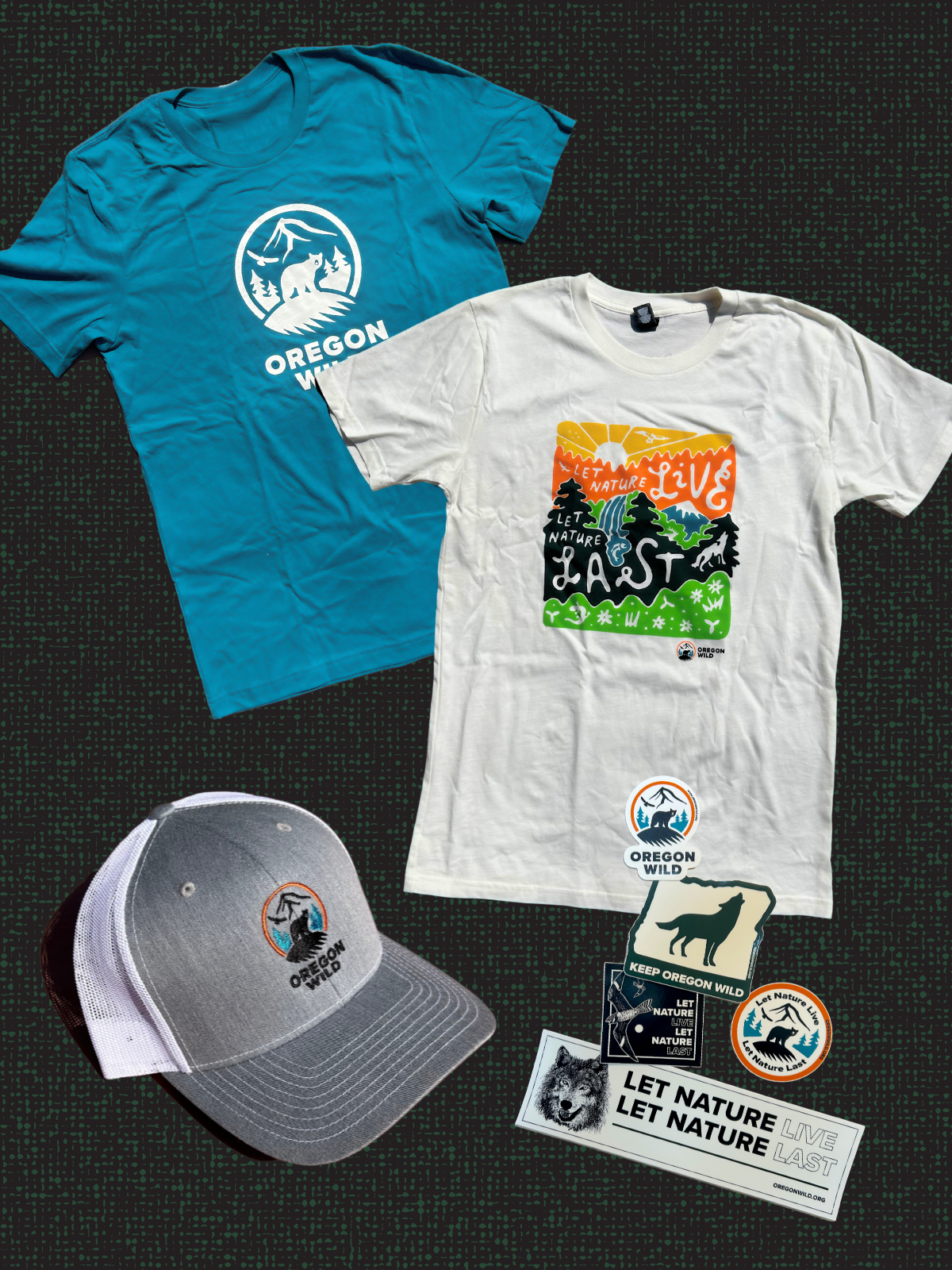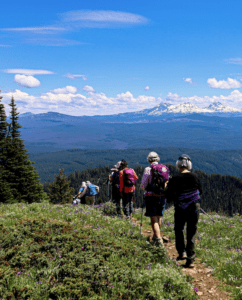Media consumption is changing. According to Pew Research Center, 86% of American adults get at least some of their news from a digital device. While many people use apps created by their trusted news source, a decent amount of our population is on social media. While it may not be the reason they used the app in the first place, 40% of Instagram users and 52% of TikTok users get their news from their feed, and the different organizations and creators they follow.
If we want policy to shift, culture has to shift with it. Culture starts with conversations, and more and more, conversations are happening online. Utilizing social media can be a powerful tool in the activist’s toolkit.
Let’s say you’ve found a campaign you’re passionate about (don’t know where to start? Check out the current campaigns Oregon Wild is working on). What next? How do you engage your online community?
Create connection
This part depends on what media you’re using. For many platforms, an engaging visual is the best way to start. If you have access to outdoor and wild places, a photo of you hiking in an old-growth forest or fishing on a scenic river is a great place to start. There are also many photos that are open domain, such as those taken by National Park Service or US Fish and Wildlife.
Next, write your caption. While backing up your argument with facts and figures is great research, people engage with topics they care about or that stir emotion. Reminding your community that these are human problems affecting YOU, and relating back to universal experiences such as survival, family, home security, and clean water can create more genuine conversations than facts and figures.
Call to action
Give people something they can do, especially if you are posting an emotionally charged topic. This is called a Call to Action, or CTA. You’ll find almost all of our campaigns have some actionable request linked to them. Can they call their representative? Write a letter to the editor? Sign a petition? Share your post to their story? Wrapping up your video, text, or caption with a quick CTA will make your audience feel empowered and continue their learning journey.
A quick way to do this is referring to a link in your bio or your story. How do you do this?
- Add a link to your profile/bio. This process will be a little different on each platform. Generally, links can be added to your bio through the “edit profile” tool, commonly found when you view your own profile, or in settings. From there, an option to ‘add a link or website’ is offered. Simply paste in the link you are wishing to amplify, such as one that leads to a comment page or a petition.
- Add a link to your story on Instagram. Let’s say you want to share something to your story, and provide the link then and there instead of referring to your bio. Once you’ve created your story by finding a post you want to share, or by typing your own text or adding a photo, find the icon that looks like a smiley sticker. You’ll be given lots of options, from tagging a location to sharing a poll. Amongst these options is a “Link” button. Click that, add your link, give it a title, and you are set to go!
Key words
Most social media platforms use a sort of algorithm to deliver content to the right audience. How does it do this? Partially by analyzing the words in your post. This makes finding key words and using them in your content key to extending your reach. These words can be worked into your caption, added as text on top of photos, or used as hashtags after the caption.
Some examples of words to use in your post’s caption include:
- Conservation, wild places, public land, old growth, wilderness, wildlife, endangered species, Forest Service, Bureau of Land Management, National Park Service, protection, outdoor recreation, rivers, democracy, clean water, air quality, climate change, Oregon
Pro tip! If you can’t work these key words into your caption, use hashtags instead!
Amplifying Your Message
One of the great aspects of social media is the ability for users to share each other’s content. This broadens the reach of the message by showing it to multiple audiences.
If you’re promoting one of our campaigns we want to share and amplify your work! When you tag us or mention us in the comments, we get a notification and can find your content. This also gives us the option to share it in our stories, or repost. If it’s relevant, you may also want to tag a senator, representative, or other politician who is close to the subject. This can simply be done by typing “@” followed by the handle or username of who you are trying to tag. A great example would be tagging Senator Wyden (@ronwyden) in content promoting the River Democracy Act.
This works both ways! If you are unsure or don’t have the time to make your own content, resharing, reposting, or amplifying other users or Oregon Wild’s posts are another great avenue. Public profiles give you the opportunity to share their work by hitting the ‘send’ button, often represented by an arrow or paper airplane. You can then send the post to specific people or to your story.
Be positive
If conservation and public land advocacy is something you plan on posting about regularly, you also want to look for good news stories and victories to share with your community. Showing past wins and progress motivates people and fights against hopelessness.


